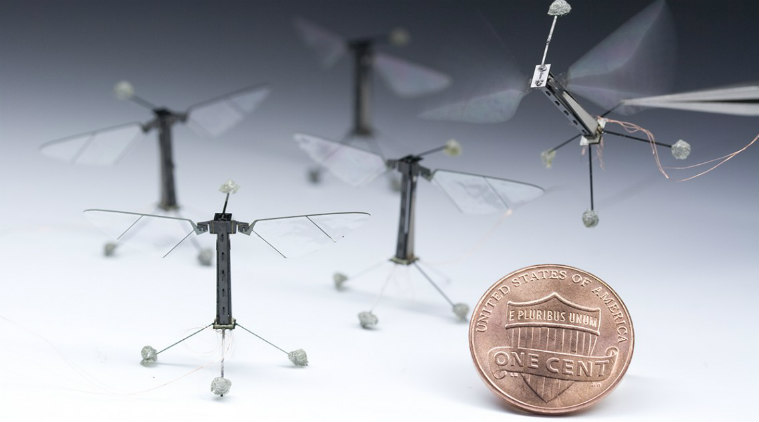New York: Scientists are developing a new type of programming that will allow tiny robots to think and act like insects, making them more autonomous and adaptable to complex environments.
Researchers at Cornell University in the US collaborated with the Harvard Microbiotics Laboratory, which has developed an 80-milligramme flying robot named RoboBee outfitted with a number of vision, optical flow and motion sensors. Although the robot currently remains tethered to a power source, the Harvard researchers are developing new power sources to eliminate the restraint.
The Cornell algorithms will help make RoboBee more autonomous and adaptable to complex environments without significantly increasing its weight. “Getting hit by a gust of wind or a swinging door would cause these small robots to lose control. We are developing sensors and algorithms to allow RoboBee to avoid the crash, or if crashing, survive and still fly,” said Silvia Ferrari, professor at Cornell University.
It would take the processing power of a desktop-sized computer for a robot to sense a gust of wind, using tiny hair-like metal probes imbedded on its wings, adjust and plan its flight as it attempts to land on a swaying flower, researchers said. As a way to shrink the robot’s power consumption, Ferrari sees the emergence of neuromorphic computer chips that process spikes of electrical current that fire in complex combinations, similar to how neurons fire inside a brain.
Unlike traditional chips that process combinations of 0s and 1s as binary code, neuromorphic chips process spikes of electrical current that fire in complex combinations, similar to how neurons fire inside a brain. Ferrari’s lab is developing a new class of ‘event-based’ sensing and control algorithms that mimic neural activity and can be implemented on neuromorphic chips.
The chips allow the engineers to pack more computation into the same payload as they require significantly less power than traditional processors. Apart from autonomy and resiliency, Ferrari’s lab also plans to help outfit RoboBee with new micro devices such as a camera, expanded antennae for tactile feedback, contact sensors on the robot’s feet and airflow sensors that look like tiny hairs.
“We are using RoboBee as a benchmark robot because it is so challenging, but we think other robots that are already untethered would greatly benefit from this development
because they have the same issues in terms of power,” said Ferrari. The Harvard Ambulatory Microrobot, a four-legged machine just 17 millimetres long and weighing less than three grammes is already benefiting from the development.
It can run at a speed of 0.44 metres-per-second, but Ferrari’s lab is developing event-based algorithms that will help complement the robot’s speed with agility.
PTI

